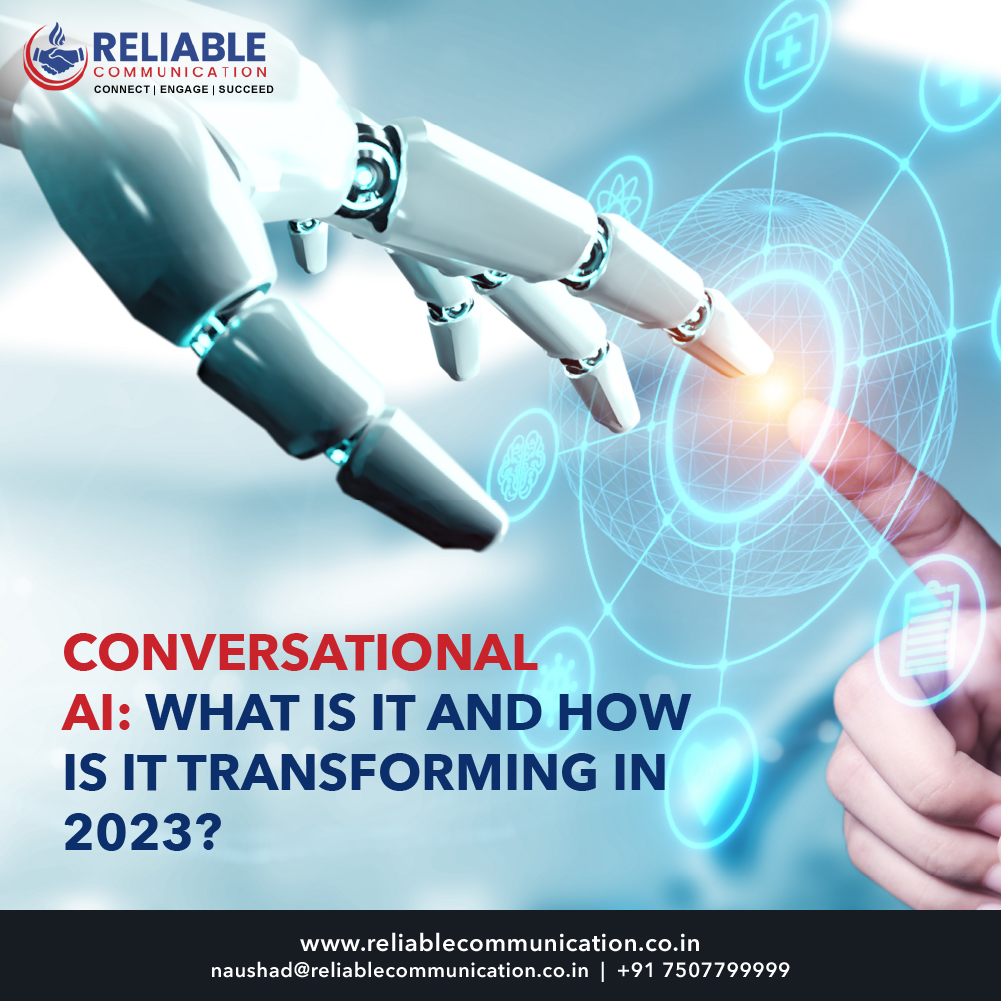Conversational AI powers contact center tools like virtual agents and chatbots. It uses machine learning (ML) and natural language processing (NLP) to help customers and give them a great experience with a brand.
What is conversational AI for contact centers?
Conversational AI is a general term for the engine that makes tools like AI-powered chatbots, voicebots, and virtual assistants usable for contact center agents. In short, it enables companies to deliver better customer service and acts as an invaluable support tool for human agents
What is an example of conversational AI?
One example of conversational AI is a virtual agent.
You’re likely using one already but, in short, virtual agents are used by contact centers to provide 24/7 service to answer customer questions. They are especially helpful for frequently asked questions and basic account queries.
Conversational AI trends and statistics.
Conversational AI can be quicker, simpler, and easier than solving an issue with a human agent. In fact, 84% of CX professionals believe customers expect a 24/7 self-service option from brands. 80% of CX professionals also believe that AI can and will provide a better contact center experience for customers.
How does conversational AI work?
Using technology such as natural language generation, machine learning, and natural language understanding, conversational AI can provide exceptional text-based or voice assistance.
Need an example? Let’s look at the steps that an AI chatbot takes to leverage conversational AI that’s been trained with company-specific keywords:
Input generation—the customer either says or types their request.
Automatic speech recognition (ASR)– allows the AI to break down the sounds it receives through your phone speaker and arrange them into words. The simplest version of ASR requires specific words to be spoken, while higher-level technology can accept normal human speech patterns, including slang and mispronunciation.
Input analysis—natural language processing (NLP) cleans up the request so the artificial intelligence engine can understand it better. Natural language understanding (NLU) may be applied to enable the artificial intelligence engine to comprehend more nuances behind the request.
Natural language generation—the AI engine formulates a human-like response and sends it back to the customer.
Five benefits of using conversational AI in your contact center.
As AI technology grows, so do its benefits.
Think of IVR systems, which have made human operators all but obsolete for part of the customer journey. It’s simply quicker, easier, and cheaper to set up an IVR menu than it is to require all callers to wait for a live operator.
These and other benefits make conversational AI transformative for contact centers, optimizing the way they interact with customers.
1. Save time for customers and agents.
In a perfect world, your customers would never have to wait for an agent. Their issues would be resolved accurately and efficiently in a single call, and they could get help on their schedule, even if it’s outside normal business hours.
Running a contact center of human agents to meet this standard would be unrealistically costly and most likely impossible.
With conversational AI, however, you can.
And you can provide better support to your human agents in the process. On a call, internal tools like virtual assistants can pull up relevant shortcuts and next steps in real time. Afterward, ChatGPT technology provides features such as automatic summary that decrease wrap-up time and increases the accuracy of your agents’ notes.
2. Increase customer satisfaction.
Conversational AI and virtual agents create a streamlined customer experience and increase customer satisfaction ratings.
The call queues are shorter, due to AI’s capability to handle simple requests, while virtual assistants give real-time support to agents who are actively on calls, helping them find solutions faster.
3. Improve customer engagement.
Conversational artificial intelligence tools enable customers to locate relevant information, without having to spend time on the phone with an agent. This improves their opinion and sentiment toward the brand.
When a company provides helpful, efficient tools to customers, they are more likely to enjoy the brand and increase their engagement. This leads to a lower customer churn rate and higher referrals or positive reviews.
4. Enhance information accessibility to customers.
Accessibility limits can strain any customer’s relationship with a company. Customer service that’s only available in certain languages, at certain times, or via certain channels can shut entire sections of your customer base out.
A conversational AI bot is easy to reach at any time of day and can be organized to be available through a number of voice and written channels. You can even set up multilingual chatbots at a fraction of the cost that it would take to run multiple contact centers in different languages.
Virtual assistants can make the next best steps for your live agents clearer to prevent mistakes, and even send reminders to your customers to take time-sensitive actions.
5. Close sales 24/7.
Rather than wait for an agent to schedule a call for a sale and onboarding, conversational AI allows your customers to buy the moment they’re ready to.
Your AI can answer questions, offer suggestions, and even help users determine the best solution for them within your product or service line.
The gap between being ready to buy and having the chance to buy is a massive conversion killer. AI closes this gap by being available 24/7 and simplifying the sales process.

